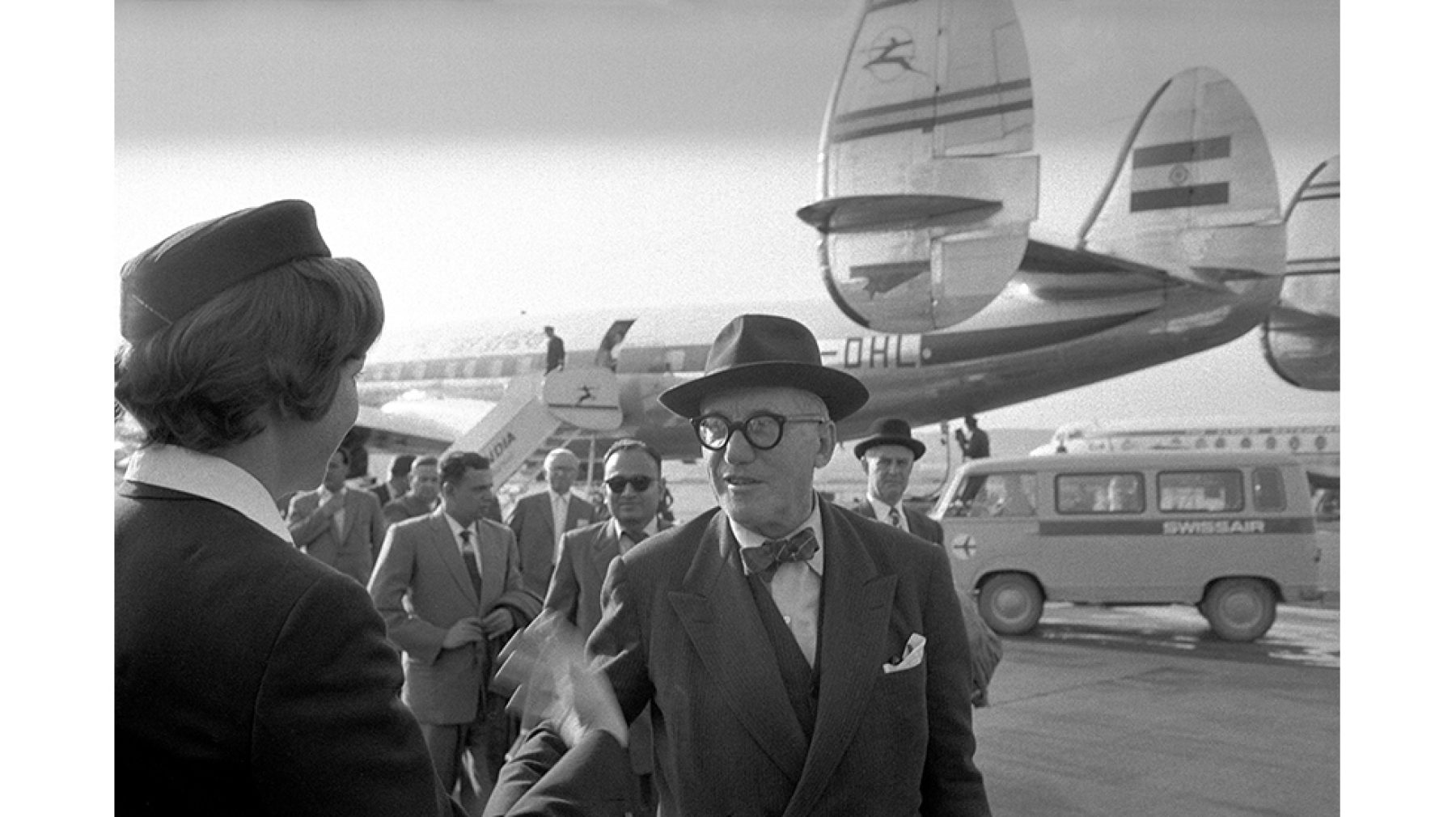This program happened on February 22, 2013.
Beatriz Colomina: Towards a Global Architect

Switzerland. Zürich-Kloten airport. LE CORBUSIER, the gallery owner Heidi WEBER and the editor of "oeuvre complete," Willy BOESIGER. Le CORBUSIER had just flown in from Chandigarh with an Air India Superconstellation. 1960. Photo: © Rene Burri/Magnum Photos
Introduced by Giuliana Bruno, Professor of Visual and Environmental Studies.
Air travel was revolutionized in the late1950s with the arrival of commercial jetliners. Le Corbusier saw the collapse of traditional space and time as nothing less than the emergence of a new kind of human. En route to India, in his favorite airplane seat, he notes: “January 5, 1960. I am settled in my seat by now acquired number 5, -alone, admirable one-man seat, total comfort. In fifty years we have become a new animal on the planet.” This posthuman is an animal that flies, the airline network is its “efficient nervous system,” its web covering the globe. The hyper-mobile architect is a symptom of a globalized society in which humanity will be necessarily transformed.
Beatriz Colomina
Colomina is an internationally renowned architectural historian and theorist who has written extensively on questions of architecture and media. Colomina has taught in the Princeton School of Architecture since 1988, and is the Founding Director of the Program in Media and Modernity at Princeton University, a graduate program that promotes the interdisciplinary study of forms of culture that came to prominence during the last century and looks at the interplay between culture and technology. In 2006-2007 she curated, with a group of Princeton PhD students, the exhibition Clip/Stamp/Fold: The Radical Architecture of Little Magazines 196X-197X at the Storefront for Art and Architecture in New York and the Canadian Centre for Architecture (CCA) in Montreal. The exhibition traveled to the Museum of Design of Barcelona, the Colegio de Arquitectos de Murcia, NAI Maastricht, Santiago de Chile, and Montevideo.
Her books include Privacy and Publicity: Modern Architecture as Mass Media (Cambridge: The MIT Press, 1994), which was awarded the 1995 International Book Award by the American Institute of Architects, has already been translated into many languages and is coming out in Spanish and in Turkish. In addition, Ms. Colomina has published Sexuality and Space (New York: Princeton Architectural Press, 1992), which was awarded the 1993 International Book Award by the American Institute of Architects; and Architectureproduction (New York: Princeton Architectural Press, 1988). She has contributed to many volumes, including The Banham Lectures, Philip Johnson: The Constancy of Change, Beyond Transparency and catalogues of the work of Dan Graham, Muntadas and SANAA, among others. In addition she has published Cold War Hot Houses: Inventing Postwar Culture from Cockpit to Playboy, co-edited with AnnMarie Brennan and Jeannie Kim (New York: Princeton Architectural Press, 2004; Doble exposición: Arquitectura a través del arte (Double Exposure: Architecture through Art) (Madrid: Akal, 2006), and Domesticity at War (Barcelona: ACTAR and MIT Press, 2007). She was selected to be a Juror for the 2010 Venice Biennale and a juror in the architectural competition for the new headquarters of CAF (Corporación Andina de Fomento), in Caracas, Venezuela. She presented "Women in Architecture," a keynote lecture in the conference Female Forces, 100 year anniversary, at the Royal Academy Copenhagen. In addition to being the editor of the Multimedia Section of the JSAH (Journal of the Society of Architectural Historians) she has written numerous other publications and presented lectures throughout the world, including at MoMA, the MAXXI museum in Rome, the Guggenheim museum, DoCoMoMo in Rio de Janeiro, Brasilia, Chandigarh, Osaka, Tokyo, Florence, Oslo, Thesaloniki, Patras, Guadalajara, Berlin, Frankfurt, Cologne, Ohio, Pamplona, Porto, Toronto, Houston, Texas AM, Yale, Chicago and Harvard University.
Archive
Explore more of our rich history through our archive.
